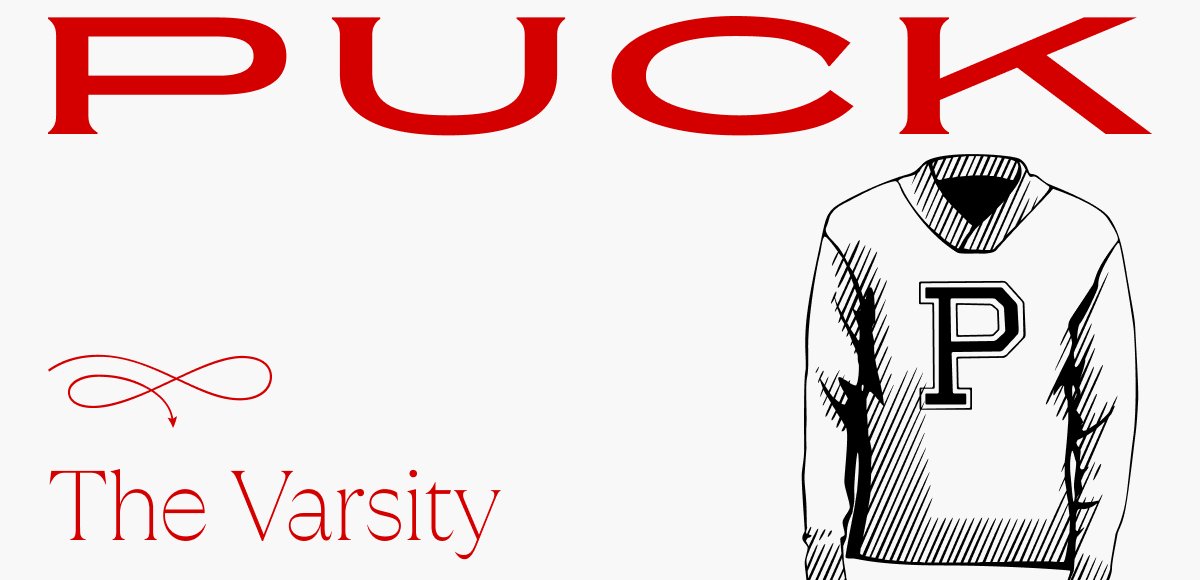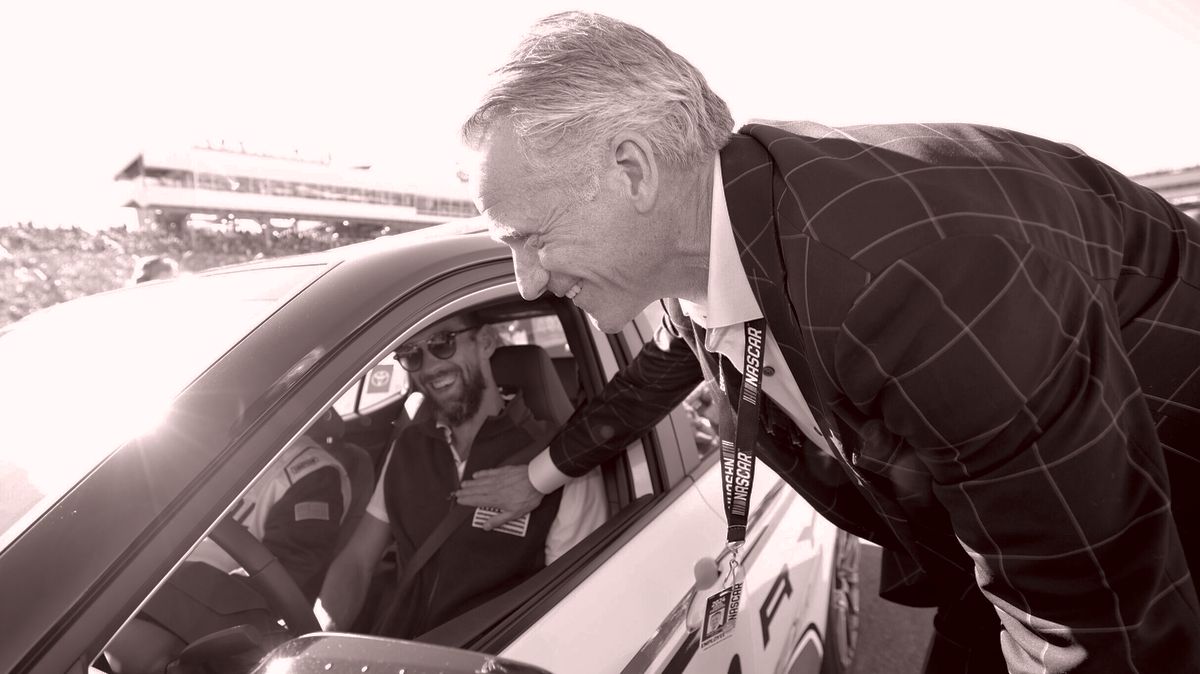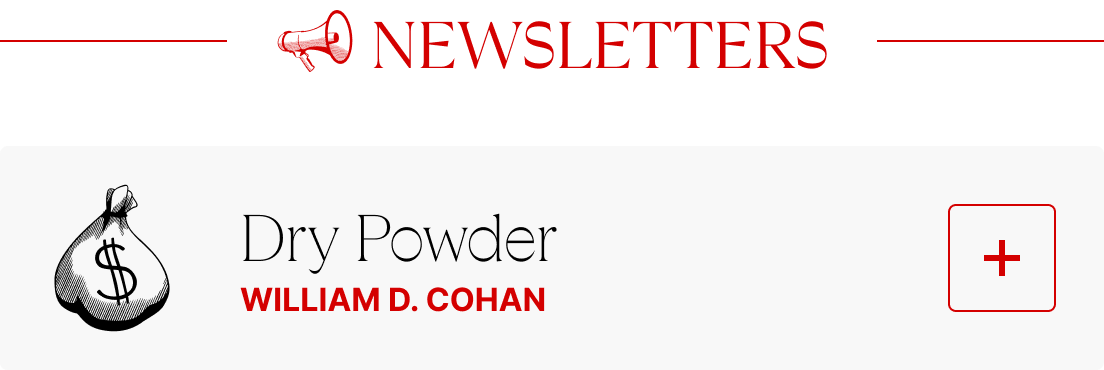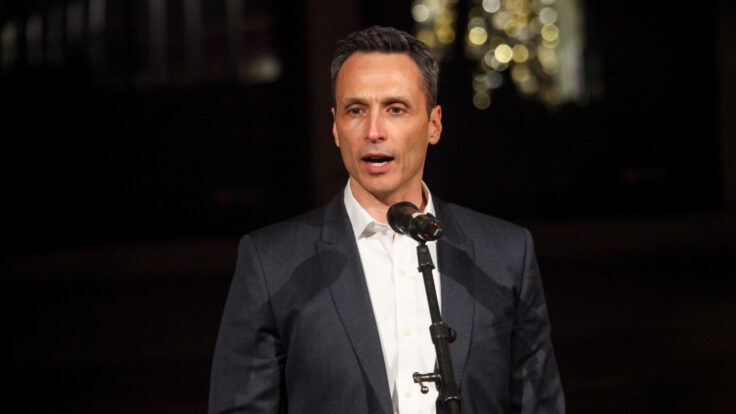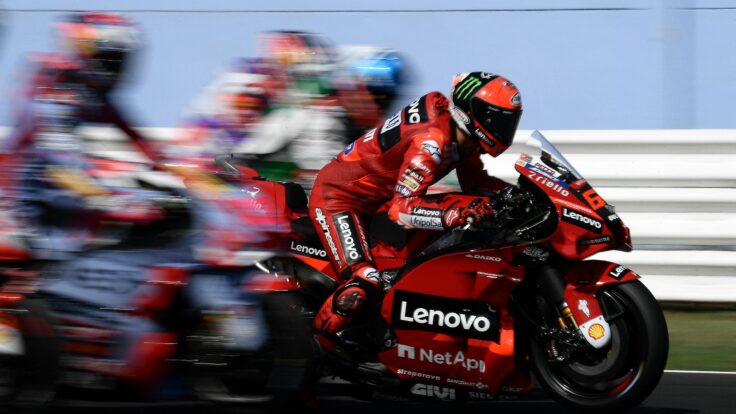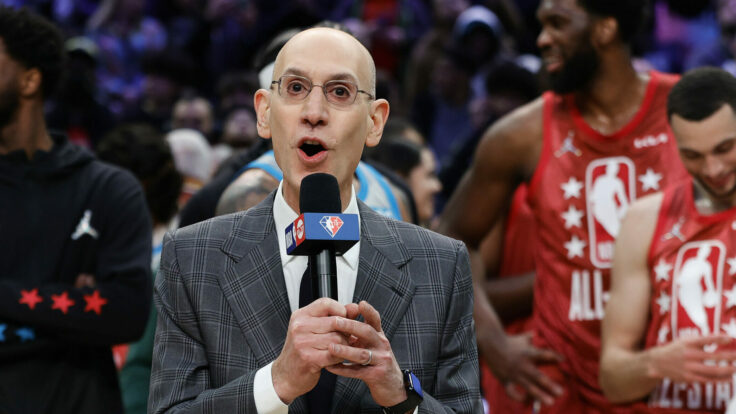Welcome back to The Varsity, my twice-weekly private email on the
tectonic business of sports. I am coming to you from D.C., home of the worst NBA team this millennium. Seriously, The Washington Post ran the numbers and found that the Wizards have the league’s worst winning percentage since Y2K, i.e., January 1, 2000. And all amid likely apocryphal talk that Cooper Flagg might return to Duke
next year for his sophomore season.
🚨🚨 Breaking news: ESPN officially opted out of its MLB deal after this season, when it has the right to exercise an exit its contract, per this bombshell report from The Athletic’s Evan Drellich.
It’s been headed this way for weeks, as ESPN looked to negotiate a smaller rights fee for its package of games. “In order to best position MLB to optimize our rights going in to our next deal cycle, we believe it is not prudent to devalue our rights with an existing partner,” commissioner Rob Manfred wrote to his owners this afternoon. “To that end, we have been in conversations with several interested parties around these rights over the past several months and expect to have
at least two potential options for consideration over the next few weeks.”
In the letter, Manfred cited reasons why it makes sense for MLB to move on from ESPN, including the fact that “as of December 2024, ESPN was available in 53.6M homes, down from its peak of over 100M homes in 2011 and 69M homes when we struck the current deal in 2021.” That 53.6 million number is well below the monthly Nielsen
estimates, which peg ESPN’s distribution in the mid- to upper-60 million range. Is this all an elaborate, and public—and risky—negotiating tactic? Let’s see what Manfred has up his sleeve…
Pod alert: Big East commissioner Val Ackerman is joining the Varsity pod this weekend for a conversation about how her conference is adapting to the many issues facing college sports these days—from N.I.L. and the transfer
portal to tournament expansion and conference realignment. Meanwhile, make sure you listen to yesterday’s episode: CNBC’s Alex Sherman and I handicapped the various media rights deals in the offing this year. Alex made some great points about the economics of ESPN’s TGL deal that might inform its negotiating strategy with
Marchand’s roller derby league. (It’s not too early for the brandy on the nightstand, Andrew. Thank you in advance…)
Let’s get to it…
|
Player of the Week: Gary
Bettman
|
Almost immediately after puck drop at last Saturday’s U.S.-Canada game, viewers learned that the
NHL commissioner’s 4 Nations Face-Off tournament was a significant upgrade from the traditional mid-season classic. Three fights in the first nine seconds? ESPN, which carried the whole tournament, was obviously incentivized to market the game throughout the day, but the network also lavished more resources and attention upon it than it would have on a regular game. Every ESPN studio show had a segment on the game—there was P.K. Subban on First Take, a
Bettman interview, and a live SportsCenter from the arena. And all of this was juxtaposed with Draymond Green shit-canning the NBA All-Star game live on TNT the following night as Chuck, Ernie, Kenny, and Shaq wore their Gone Fishin’ gear during the broadcast.
|
Down to the J.V.: Adam Silver
|
The aforementioned juxtaposition between the NHL’s fight night and the NBA’s All-Star Weekend
was stark, especially on Saturday, with perennial G-Leaguer Mac McClung winning the dunk contest and Victor Wembanyama and Chris Paul getting disqualified from the Skills Challenge for lamely saving time by not even trying to make baskets. The U.S.-Canada hockey game on ABC attracted more viewers than A.S.W. Saturday night on TNT, 4.4 million to 3.4 million. NBA All-Star Weekend may be good for business, but declining fan interest continues to
be a black eye for the league.
|
|
|
A MESSAGE FROM OUR SPONSOR
|
The BMW 7 Series pairs undeniable luxury with high performance. Learn more at
BMWUSA.com.
|
|
|
- CFP problems: It should be easy enough to make some changes to the College Football Playoff, starting with revising the seeding system. The status quo currently favors the lesser power conferences, like the ACC and Big 12, by affording their champions a bye week. And it undercuts the Big Ten and SEC, whose conference champs were pitted against top programs in the second round of the tournament.
Nevertheless, SEC and Big Ten officials ran into
blockers when they suggested tweaking the seeding system for next season. After all, any change to next year’s format requires unanimity among the conferences, and the two mega-conferences definitely do not have the votes currently in hand. “I do not have the appetite to give up any financial reward that comes with a bye,” Big 12 commissioner Brett Yormark was quoted as saying in Ross Dellenger’s excellent Yahoo
story on these negotiations. The upshot: The SEC and Big Ten are expected to tough it out next year before taking over the boardroom.
- One futile ESPN-MLB idea: A TV news producer emailed me the other day about a point of possible leverage that ESPN may
have been able to exploit in its negotiations with MLB. “If ESPN is going to license Fox Sports content for Flagship, doesn’t that alleviate the need for ESPN to pay for MLB games? It also helps keep premium content on the service for the summer.”
It’s true that Fox and ESPN did have early talks about the possible mutual benefits of the direct-to-consumer service known as Flagship, talks which led to the creation of Venu, the sports streaming service that shut down in January,
months before a planned launch. Speculation that Fox would sell branded content to various streamers picked up again when Venu shut down, only to be quashed—again—two weeks ago, after Lachlan Murdoch said Fox would launch its own service by the end of the year. It’s possible that eventually Fox’s streaming strategy will involve selling its own branded bundles to various streamers, but I’m told that ESPN’s D.T.C. launch this fall won’t include Fox programming. And it’s
not likely to include it by next summer either. Meanwhile, ESPN and MLB are in Ben–J.Lo territory.
- A streamers’ report card: During a recent appearance on the Varsity podcast, CNBC’s Alex Sherman and I compared the sports strategies of the various streamers, and which of them could be the sleeping giant that changes the landscape for streaming sports. I wondered whether YouTube would increase
its footprint in the wake of its NFL Sunday Ticket deal. “I think YouTube is a very plausible bidder for the NFL in five years,” Sherman responded. “In terms of the smaller sports, though, I don’t know if YouTube cares. I do think that football is a possibility, not only because YouTube already has Sunday Ticket, but also because NFL games have cultural coinage. They are part of the zeitgeist of American culture. It would make sense to me that if YouTube wants to be the new television—that’s
what its C.E.O., Neal Mohan, talks about—that live NFL games will be part of the new television.”
- MLB’s local streaming push: A full complement of local streams for most MLB teams probably won’t be ready until 2028, when the league will negotiate new deals. But companies like Amazon and ESPN have already expressed interest. This season, baseball fans will get a sense of how that will look. Amazon is streaming FanDuel Sports Network
channels via Prime for about $20 per month. Even SportsNet New York, the Mets R.S.N. owned in part by cable companies Charter and Comcast, is launching a direct-to-consumer service through MLB for about $25 per month. The idea of teams streaming games is not new. This season, however, about eight teams will not have streams of live games available to cord-cutters. As consumers become more inured to streaming games, the value of that local streaming package should continue to grow.
- Stephen A.’s political future: ESPN’s bombastic, seemingly unstoppable on-air star made a cameo in my partner Peter Hamby’s recent edition of Puck’s top-flight private email on politics, The Best & The Brightest. The polling firm Echelon Insights endeavored to find out who could lead a Democratic
presidential ticket in 2028. Herewith…
Peter Hamby: Three names came up, none of them actual politicians, or even nominal Democrats: Mark Cuban, Dwayne “The Rock” Johnson, and ESPN yapper Stephen A. Smith. A few years ago, I would have laughed at these suggestions, but given the rock-bottom state of the Democratic Party, and a new poll I had my hands on, I was in a mood to listen. The arguments
in these folks’ favor weren’t complicated: Democrats, the thinking goes, need a loudmouth dude to run against Trump, someone who can throw punches, capture attention, and break through to the kind of voters who don’t follow politics very closely.
Stephen A. is not exactly swatting down the recent political buzz coming his way. The extremely noisy sports pundit probably wouldn’t want to walk away from his bonkers new ESPN contract—worth a
reported $120 million over six years, or at least in that neighborhood. But he’s made a habit recently of attacking the Democratic Party’s social justice impulses and Trump-induced impotence. “I’m a Democrat’! Smith
hollered on his eponymous podcast Tuesday, adding that he was glad Barack Obama deported so many undocumented immigrants. ‘But a moderate! A centrist, leaning left!”
Guess who had the highest net favorable rating? Cuban, with 39 percent. Only 26 percent of likely voters had an unfavorable opinion of the celebrity rich guy/prescription drug reformer. He’s less well known than Kamala
Harris and other big political names—with 35 percent saying they either had no opinion of Cuban or hadn’t heard of him—but his net favorable rating surpassed both Harris’s and the Democratic Party’s.
Echelon also tested Stephen A. Smith, who was also more liked than disliked. Still, a majority of voters either didn’t know about Smith or didn’t have an opinion on him—a dynamic that will surely upset Smith.
|
And now, the top of the card…
|
|
|
This year, NASCAR spread its races across five different media
companies—everyone from Amazon Prime to The CW—testing fans’ loyalty, financial fitness, and scheduling awareness. After the grumbling stops, is it time to ask when enough is enough?
|
|
|
For the past decade, NASCAR Cup Series races have been relatively easy to
find: Fox carried the first half of the season, NBC carried the second. But a couple of years ago, as NASCAR executives started negotiating new media rights, they discovered what other sports leagues had already figured out—spreading your schedule across as many platforms as possible was the surest way to increase value.
NASCAR’s new, much sweeter rights deals kicked off with last weekend’s Daytona 500.
The seven-year pacts are worth a total of $1.1 billion annually, up from about $800 million, and now involve five media companies. Fox still carries the opening races, NBC still carries the later ones. In between, Amazon Prime and Warner Bros. Discovery will carry five races apiece. Adding further diffusion, NASCAR sold the rights to its second-tier Xfinity Series to a fifth media company: Nexstar’s The CW. Months ago, in
Dude, Where’s My Nascar (Part I), president Steve Phelps defended this paradigm by pointing to progenitors in other sports.
Predictably, the grumbling started as soon as these deals saw daylight, drawing the same complaints soccer and tennis
and baseball fans have been making for years: it’s become too expensive to sign up for all the services that carry a sport, and too difficult to figure out where to find a given event. In fact, just about every major sport is carried on a wide array of channels, streamers, and bundle variations these days.
This won’t last forever, of course. Media executives often talk about the “great rebundling,” when several of the
streaming services merge, offering fans fewer options to find their games, but also fewer vendors to pay to see them. But while these complaints have grown louder as sports migrate to new platforms, there’s some evidence that hardcore fans are following their favorite sports to different platforms. Paramount and NBC executives, for example, consistently say their biggest subscriber boosts come from NFL and international soccer games, suggesting that sports fan completists are still happy to pay
to never miss a game or match. Unfortunately, not everyone can be the NFL or the Premier League.
|
NASCAR executives were conscious of these complaints as they negotiated the new deals.
But they were also confident that the sport’s fervent fan base would follow the races wherever they happened to wind up, mostly because they’d done it before. Their old deals with Fox and NBC had included races airing on channels like FS1 and USA. “Our fan base was accustomed to some channel hopping,” said Brian Herbst, NASCAR’s C.R.O. and executive vice president of media, echoing Phelps’ comments to me months ago. The league believes that the races will be even easier to find
this time around because they follow a set schedule, even if they appear on different networks: Thursdays are for Duel races, Fridays for Truck races, Saturdays for Xfinity races, and Sundays for Cup races.
|
|
|
A MESSAGE FROM OUR SPONSOR
|
The BMW 7 Series pairs undeniable luxury with high performance. Learn more at
BMWUSA.com.
|
|
|
Unlike the NFL, which may have a Monday night game on ESPN and maybe a game
the following Wednesday on Netflix and then another Thursday one on Amazon, NASCAR has more week-to-week continuity and fewer switches. “It’s easier for us to say, ‘You’re going from the Fox portion of the season into the Amazon and the TNT portion, and then the NBC portion,’” said Herbst. “We have an advantage in terms of setting up the weekend, one weekend after the next, from February to November, versus trying to understand where a game may be based on the partner kind of jumping around
different channels or digital platforms.”
Of course, NASCAR also has loads of promotional and marketing campaigns designed to let fans know where to find the races. And the mediacos will promote each others’ races, similar to the way the networks treat the NFL and Big Ten and NBA Playoffs. “When you see Amazon get closer to their launch window, which is Memorial Day, you’ll see a heavy marketing push and
promotional campaign from Amazon in April and May, which will include third-party spend,” said Herbst. That’s similar to The CW’s approach during Daytona, when it pushed a tune-in marketing campaign across its 200-plus affiliates. “They certainly spent to make sure that our fan base and our viewers were conditioned to the fact that the Xfinity series will be on CW,” Herbst said. Perhaps it’s no surprise, then, that the 1.8 million viewers who tuned into The CW’s first race last weekend comprised
the Xfinity series’ largest audience in two years.
Interestingly, the 6.8 million viewers who tuned into Fox’s coverage of Daytona bested both the NBA All-Star Game and the NHL’s 4 Nations Face-Off. It was NASCAR’s biggest audience in two years. And if anyone still needs reminding, the fan base is broader than you think. When Phelps was on the Varsity podcast back in November, he said he
expected that the number of NASCAR fans who subscribe to Amazon Prime would grow considerably as it began carrying races. “That universe is, right now, actually higher in terms of a subscriber base than the cable universe,” he said. “Do I think our fans will find it? I am confident that they will.”
|
On the Varsity pod with Alex Sherman: “You brought up a great point
about YouTube being a sleeping giant for NFL rights. I think many in the sports media have just gifted [the NFL to Netflix] incrementality, but Google has scale and money, too. With the NFL having seven international games in 2025, it would appear there’s enough to go around to satisfy the Peacock and ESPN+ streaming exclusive games, four NFL Network games, leaving one game that could be available to a YouTube or Netflix as a test before the NFL’s next round of bids. I had always considered
Apple a sleeping giant, given the Apple Music relationship, but the scale discussion you had with Alex has walked me off of that ledge.” —A Varsity subscriber
On placing Grant Hill on the Mount Rushmore of former NBA players who went on to succeed in business alongside Shaq, Magic, Junior Bridgeman, and Michael Jordan: “Naming a five-person Mount Rushmore is surely the writers’
equivalent of a modern All-Star event: extra flash to cover the intentional lack of effort, so no one gets hurt.” —A Varsity subscriber
[Ed. note: It was Marchand’s idea!]
On NASCAR ratings: The CW ratings increase last season was for the second-tier
Xfinity Series (which is now exclusively on CW). I’m curious to see how the Cup ratings fare with so many fewer races on broadcast TV (just eight points races on Fox and NBC, compared to 20 last season). —A local-news executive producer
|
Have a great weekend. See you Monday,
John
|
|
|
Unique and privileged insight into the private conversations taking place inside boardrooms and corner offices up
and down Wall Street, relayed by best-selling author, journalist, and former M&A senior banker William D. Cohan.
|
|
|
Finally, a media podcast about what’s actually happening in the media—not the oversanitized,
legal-and-standards-approved version you read online. Join Dylan Byers, Puck’s veteran media reporter, as he sits down with TV personalities, moguls, pundits, and industry executives for raw, honest, sometimes salacious conversations about the business of media and its biggest egos. New episodes publish every Tuesday and Friday.
|
|
|
Need help? Review our FAQ page or contact us for assistance. For brand partnerships, email ads@puck.news.
You received this email because you signed up to receive emails from Puck, or as part of your Puck account associated with . To stop receiving this newsletter and/or manage all your email preferences, click here.
|
Puck is published by Heat Media LLC. 107 Greenwich St, New York, NY 10006
|
|
|
|
